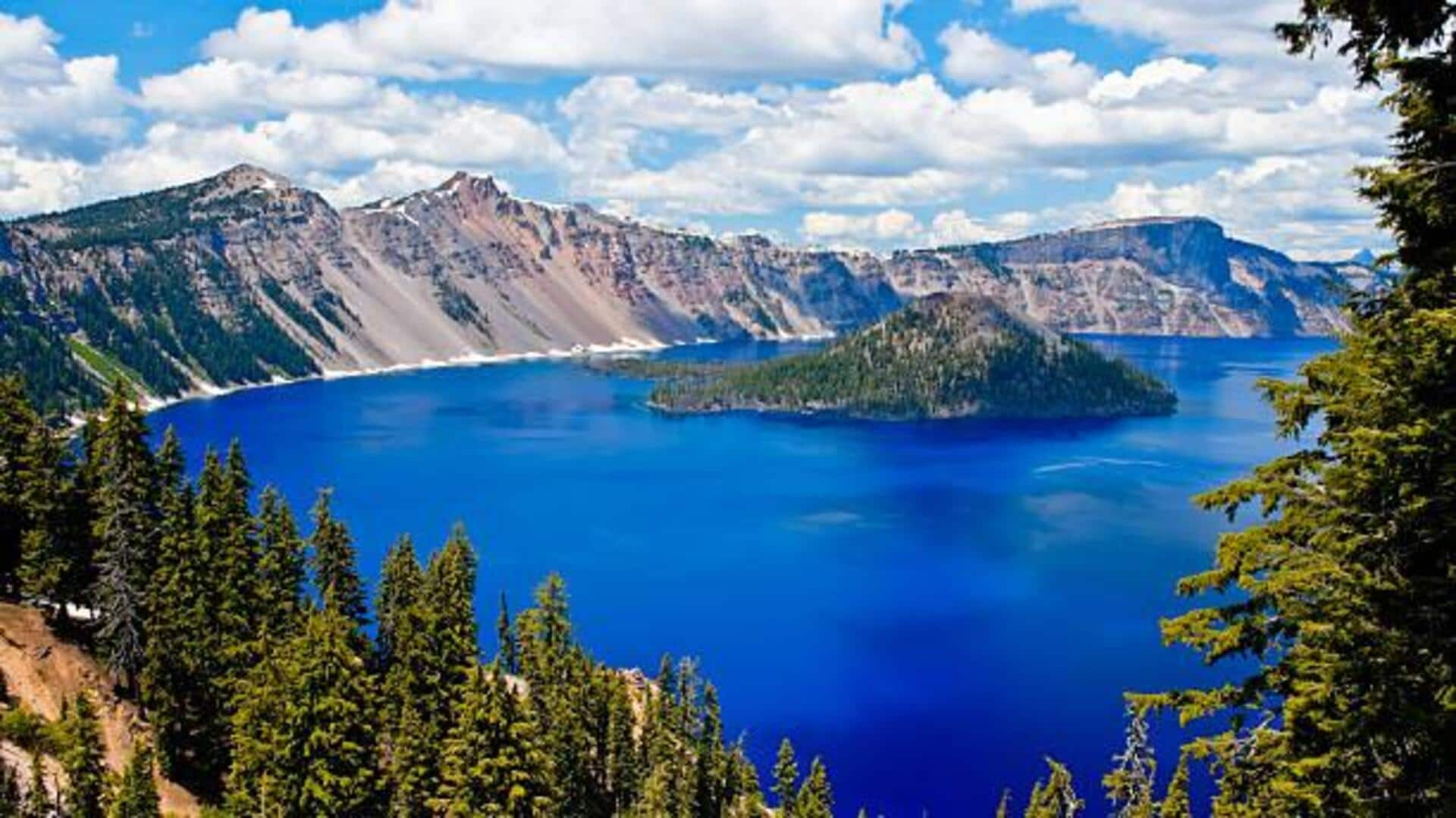
You must add these volcanic lakes to your list
What's the story
Volcanic lakes are some of the most mesmerizing natural wonders. They are formed when water collects in the craters of dormant or extinct volcanoes. Often surrounded by captivating terrain, these lakes are home to unique ecosystems. Found in different parts of the world, each one of these lakes is different from the other. Let's discover these hidden gems and what makes them so special.
Crater Lake
Crater Lake: A deep blue wonder
Crater Lake in Oregon, USA is famous for its deep blue color and its clarity. Formed roughly 7,700 years ago after the collapse of Mount Mazama, it stands as one of North America's deepest lake at roughly 1,943 feet. The lake has no rivers flowing in or out of it, but is fed by rain and snowmelt. This isolation keeps it pristine and a favorite among visitors.
Kelimutu
Kelimutu: The tri-colored lakes
Kelimutu Volcano in Indonesia is known for its three crater lakes that change colors periodically due to chemical reactions in their waters. Each lake has a different hue — from turquoise to green to red — depending on volcanic activity and mineral content. The color changes make Kelimutu a fascinating site for both scientists and tourists looking to witness a natural phenomenon.
Lake Toba
Lake Toba: A supervolcano's legacy
Sumatra's Lake Toba in Indonesia is the largest volcanic lake on Earth. It was created by a supervolcanic eruption roughly 74,000 years ago—the largest known explosive eruption on Earth in the last 25 million years. Spanning about 1,707 square kilometers with an island called Samosir at its center, its sheer size and volcanic history make it an interesting site for geological study.
Laguna de Apoyo
Laguna de Apoyo: Nicaragua's natural reserve
Laguna de Apoyo is located in an extinct volcano crater near Granada, Nicaragua. The freshwater lake spans 21 square kilometers and reaches depths of up to 200 meters. It is a natural reserve with a variety of flora and fauna, including howler monkeys and different kinds of birds. The warm waters draw swimmers, while researchers focus on its unique ecosystem dynamics.
Quilotoa
Quilotoa: Ecuador's emerald gem
Quilotoa, a water-filled caldera in Ecuador's Andes, lies over 3,800 meters above sea level. Formed about 800 years ago, this emerald lagoon covers approximately three kilometers across. With depths reaching 250 meters, it's a popular destination for hikers who enjoy the surrounding trails and stunning Andean vistas. Its remote basin holds stable levels throughout the year, despite seasonal changes in precipitation.